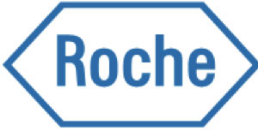Navigating Fentanyl-Related Substances Regulations Using Our Software Solutions
Online software solutions are leading the way to greatly improved compliance against controlled drug laws globally. Here we examine how software solutions are significantly improving the regulation of fentanyl-related substances and controlled chemicals in general.
Fentanyl-related substances are behind the current international synthetic opioid drug overdose emergency, particularly in North American communities.1,2 The highly potent synthetic opioid fentanyl was initially created by Paul Jansen in 1960 and then used to treat chronic, perioperative, and postoperative pain. Being 50 – 100 times more potent than morphine3, easily made and modified in the laboratory, and highly addictive, fentanyl-related substances are, more recently, one of the largest concerns for law-enforced regulatory compliance.
Challenges in Navigating the Control of Fentanyl-Related Substances
Being easily modified with millions of possible analogs existing under a huge variety of different names makes fentanyl-related substances difficult to identify. One of the key compliance aspects and challenges for chemical suppliers, especially within the medicinal chemistry and pharmaceutical industry, is correctly identifying these fentanyl-related substances and other controlled drugs. Also, with regard to drug scheduling, countries have very different regulatory laws and definitions of analogs and enforcement for fentanyl-related substances, meaning what is allowed in one will be considered a schedule 1 controlled substance in another. To manually check these when trying to navigate the control of fentanyl-related substances is an incredibly time-consuming task, and controlled and scheduled substances can easily be missed.
How Software Solutions Are Combatting These Challenges
An all-important technique in combating these issues with identifying and regulating fentanyl-related substances is the emergence of online software solutions that compare existing and newly synthesized chemicals against named controlled substances plus the chemical classes and rules defining analogs in legislation from countries across the globe.
With an ongoing increase in the number and size of chemical databases used within chemical supply and research, software solutions that compare and identify controlled substances that reach regulatory compliance are also evolving. Web-based software solutions offer a streamlined and simple method to access the molecular structure of a compound, allowing it to be identified or ruled out as a fentanyl-related substance in the country of interest.
Opposed to widespread misconceptions, when checking if fentanyl-related substances meet a country’s regulatory compliance, you cannot assume that simply downloading a country’s list of controlled substances to compare will suffice. This method is highly error-prone and is likely to result in compliance issues when identifying fentanyl-related substances. This is again related to the fact that fentanyl-related substances are known by hundreds of different names and identifiers. So, if the name chosen in your search doesn’t exactly match its name in the list of substances, it will be missed. On top of this are the many controlled analogues of fentanyl-related substances themselves, of which only a few examples are listed in legislation. Thus, searching for fentanyl-related substances via chemical structure is necessary.
Our Software Solution
We here at Scitegrity provide a fast, simple yet powerful and comprehensive software solution to identify if your chemicals are controlled, including under fentanyl-related substances legislation. Our software tells you if and how your chemicals are regulated/controlled, covering more than 28 countries worldwide. With the use of .sd, SMILES, InChi, or name searching, you can check tens of thousands of chemicals in a single search. Our software solution also checks all legislative requirements, such as all ethers, esters, salts, stereoisomers, analogs, and controlled areas of chemical space.
You don’t have to be a qualified chemist or compliance expert to check for fentanyl-related substances, or any controlled substance, using our software solution. Simply upload the molecular structure of your chemical, or its chemical or common name (or even your company's chemical ID), select the countries you wish to check and Controlled Substances Squared will do the rest. At the click of a button, it will provide information on whether it's controlled, the legislation, and a detailed chemical explanation of why it's controlled under controlled drug laws, including fentanyl-related substances.
With the increasing severity of fentanyl-related substance overdoses and increased regulatory oversight, correctly identifying these synthetic opioids and other controlled substances is vital for chemical suppliers and pharmaceutical companies. It enables the safe and legal supply of chemicals and avoids reputational damage, fines, regulatory action, or worse. We are proud to provide you with a solution that is relied on at the Enterprise level by 5 of the world's top 10 Pharmaceutical companies, plus dozens of chemical suppliers, manufacturers, and regulators to identify all their controlled chemicals. Join them in solving the process of identifying fentanyl-related substances and other controlled chemicals, streamlining, and reducing the risk of non-compliance.
References
- Wilson, N., Kariisa, M., Seth, P., Smith IV, H., and Davis, N.L. 2020. Drug and opioid-involved overdose deaths—United States, 2017–2018. Morbidity and Mortality Weekly Report. 69(11), p.290.
- Grywacheski, V., O'Connor, S. and Louie, K. 2018. Opioid-Related Harms in Canada. Healthcare Quarterly (Toronto, Ont.). 20(4), pp.10-12.
- Poklis, A. 1995. Fentanyl: a review for clinical and analytical toxicologists. Journal of Toxicology: Clinical Toxicology. 33(5), pp.439-447.
- Miller, M.A., 2002. Chemical database techniques in drug discovery. Nature Reviews Drug Discovery. 1(3), pp.220-227.
Trusted by our Clients











